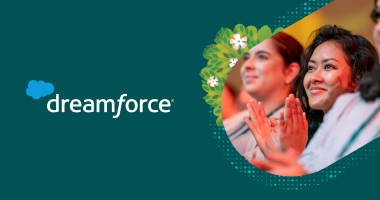When it comes to the financial services industry, performance is everything. This is why financial services professionals all over the world rely on Iress, an Australia-based software company, for everything from trading on global markets, to providing financial and retirement savings advice, to efficiently processing mortgages.
Since its 1993 launch in Melbourne, Iress has grown rapidly and now serves over half a million global users and is trusted by 9,000 businesses. In 2001, Iress had just 100 employees. Today nearly 2,000 employees work across 19 offices in eight countries to develop software for the ever-evolving financial services industry.
To keep its fast pace and continue delivering innovative software, the company set out to transform internal operations. ‘As our business expands into new markets and territories,’ says Iress CEO Andrew Walsh, ‘the need to reduce complexity and make it easy and fast for people to share information and collaborate is paramount.’ As part of its strategy to simplify processes and streamline communication, Iress adopted Slack.
Rather than forcing a top-down technology solution on employees, the company decided to let users decide. Iress’s head of workplace technology, Manqing Zhao, explains that ‘our users tried all the options, and told us they loved Slack.’ Just four months after deployment, 62% of employees reported that Slack made them feel more connected.
‘Our vision is to support a mobile, flexible and collaborative environment,’ Zhao explains. ‘We choose solutions that support our growth as a technology company and allow our people to add value. Slack fits into that vision.’ From leadership to customer support, Slack made the globally distributed company feel smaller and increased efficiencies across borders.
‘We choose solutions that support our growth as a technology company and allow our people to add value. Slack fits into that vision.’
Moving from email silos to collaborative channels
Iress previously relied on email for internal communication. The company tried different collaboration tools, but none solved the challenge of siloed communication.
‘It was all very ephemeral,’ says Kelly Fisk, Iress’s head of communications. ‘Information wasn’t easily retained or usable.’ Iress’s developers were early Slack adopters, and ‘it became apparent very early that Slack was what we were looking for, not only in our technology teams, but across the whole of our business,’ Fisk says
With Slack, Iress has practically eliminated internal email – company announcements as well as project and team discussions now take place in channels, digital spaces where teams can collaborate. Rather than asking people to log in to 20 different apps every day, Iress consolidates workflows in Slack with integrations, which pull in key information and processes from other platforms.
‘Everything happens in Slack,’ Zhao says. ‘By building it into our workflow, we’re making everyone’s experience much more simple and easy. Slack has facilitated a significant improvement in our client and user support experience.’

As a case in point, Iress employees use the Google Drive integration to share documents and update permissions, all from within Slack. This eliminates time-intensive context switching.
‘It’s been incredible in centralising and streamlining a lot of our collaborative work, including multitouch projects, such as our annual results process,’ Fisk says. Iress sets up dedicated channels to pull in key stakeholders from multiple teams, including legal, finance and communications, so they can securely share and collaborate on the materials in a central space, she says.
Beyond collaboration, Iress relies on Slack for companywide updates. In lieu of an all-staff email, Walsh has his own Slack channel for announcements. Every Monday he posts a summary of his weekly agenda as well as photos, observations and comments he’s heard from clients, users and people across the business. Often his updates spark one-off conversations, bridging the gap between employees and leadership.
‘Andrew and other members of the leadership team are extremely accessible to our people – anyone can walk up and ask questions or make suggestions, and Slack is a digital way to do that globally,’ Fisk explains.
Walsh is also active in other Slack channels, responding to comments and asking questions. ‘If someone’s done something really great, he’s often one of the first to like it or post a comment,’ Fisk says. This boosts morale and is especially encouraging for employees who don’t see Walsh on a day-to-day basis.
‘Everything happens in Slack. By building it into our workflow, we’re making everyone’s experience much more simple and easy.’
Resolving complex issues faster with Slack
Over the past 18 months, Iress has been laser-focused on improving the client and user experience, including how they access support. As a first order of business, Vlad Lutschenkow, a product specialist team lead at Iress, sought to improve collaboration between the ‘experts – the people with deep experience who build the software – and the front-line support team.’ By linking these players through Slack, Iress ensures that the right people are engaged to resolve client issues faster and more effectively.
Iress uses channels to coordinate behind-the-scenes support. Previously the company relied on email and phone calls for urgent issues, tracking people down one by one. Messages were missed, emails bounced around and time was lost. Lutschenkow alone received upward of 500 emails per day.
Now critical issues are handled in Slack. Lutschenkow’s team swarms priority issues in #client_priority, which has over 100 members capable of expediting and resolving the most serious situations. Leveraging Slack as part of a broader support strategy has helped Lutschenkow’s team cut the average response time for complex customer issues from eight days to two, and led to a 64% decrease in the customer support ticket backlog.
Iress also sets up Slack channels with clients. If, for instance, a client has a question on Iress’s Xplan software, the client can ask the question in channel for a quick response. Iress also proactively posts information about new products and alerts in channel, stemming the tide of incoming support requests.
A handful of the company’s clients were new to Slack and uncertain about using channels, but that quickly changed, Lutschenkow says. ‘A couple of months later, they’re going, “Great! This is really good. We’re getting more responsiveness. Our turnaround times on tickets are better,”’ he says.
‘We reduced the support ticket backlog by hundreds, and Slack played a role in that.’
A custom bot simplifies service desk requests
Iress’s previous workplace technology tools created unnecessary complexity and discouraged employees from submitting service desk tickets. With the introduction of Slack, the team saw an opportunity.
‘Slack was the natural option for a quick win for two reasons,’ Zhao explains. ‘One, our people like Slack, and we don’t have to teach them something new. And two, building a Slack integration is easy.’
Zhao’s team developed a custom internal-ticketing interface in Slack within two weeks. They named it Alfred bot, after the butler in Batman movies.
With Alfred bot, users can log service desk tickets and receive real-time updates within Slack. ‘Because of the Slack integration, we are able to hide the complexity,’ Zhao says.
On the backend, Alfred bot kicks off an internal support ticket; whenever the ticket’s status is updated, the requestor is notified in Slack. These efficiencies enable the workplace technology team to resolve issues faster so that they can spend more time thinking of new ways to improve the employee experience.
‘I’m a fan of integrations,’ Zhao says, ‘because integrations enable automation, and automation creates space for innovation.’
No matter where they’re based, Iress employees rely on Slack to find the right information faster, solve issues more quickly and collaborate more efficiently. By removing workplace friction, whether it’s submitting a support request or keeping track of companywide updates, employees gain more time and focus for their no. 1 priority: helping more than 500,000 financial services professionals around the world drive better performance for their clients every day.












